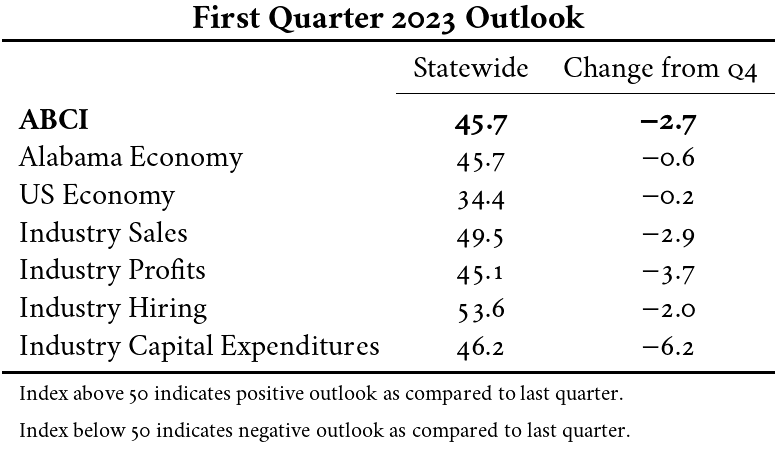UA Economists: Alabama’s Economic Growth Projected to Slow while Inflation Expected to Decrease
- April 16th, 2024
Tuscaloosa, Ala – Alabama’s economic growth is projected to slow while inflation is expected to slightly decrease through 2024, according to researchers at The University of Alabama’s Center for Business and Economic Research (CBER).
The state’s economy continued to grow in 2023, without being affected by stubborn inflation, monetary policy rate hikes, lingering labor shortages, and the continued effects of the Ukraine-Russian war, according to CBER.
Alabama’s economic output for 2024 is projected to increase 1.2%, compared to a projected increase of 1.4% for the United States. The projection comes after the state’s economic output grew by 1.9% in 2023, due to high consumer spending and a surge in exports. Nationally, the economic output grew by 2.4% in 2023, driven by pent-up demand and accumulated savings from the pandemic era.
“Most likely Alabama’s growth for 2023 will be revised upwards to slightly over 2.0%,” said Ahmad Ijaz, CBER’s executive director and director of economic forecasting.
Businesses and consumers spent almost $3 trillion in savings during the pandemic, which aided in avoiding a recession and sustain the economy . Economists estimate that approximately $1.0 trillion in accumulated savings are still remaining, and these funds could continue to keep both businesses and consumers buoyed despite high interest rates.
“Strong consumer spending in 2022 and 2023 was driven primarily by pent-up demand and accumulating savings built up during the pandemic era,” Ijaz said.
The Center for Business and Economic Research has produced forecasts of economic activity in Alabama since 1980. The center incorporates data from the last 30 years, including cycles and recoveries captured over the years, into its statistical and economic models. These forecasts cover Alabama’s gross domestic product, employment, and income by industry group and are published in the annual Alabama Economic Outlook, which includes and annual analysis into the national and state economy, including examinations of metro areas in Alabama. Forecast updates are provided quarterly. The 2024 Alabama Economic Outlook, available for free on the center’s website, reports consumer spending should increase by 1.9 percent in 2024 and 1.5% percent in 2025, which could be damped by high levels of consumer debt going forward.
“Alabama’s economy is still growing,” said Ijaz, “and will continue to do so despite recession fears triggered by higher interests rates.”
This year’s outlook includes the effects of population aging on labor force participation and whether Alabama really does have a labor shortage. The feature article highlights the need for economic stakeholders to incorporate a demographic perspective to improve the status of labor force participation in Alabama.
“There are clear patterns of population aging in Alabama that also shape the supply of the labor market,” said Dr. Nyesha Black, the director of demographics at CBER. “There are also significant shifts in the economic behaviors of younger male workers that are exerting a negative effect on Alabama’s overall labor force participation rate. In fact, Alabama’s labor force participation rates would be worse if it were not for the increased labor market engagement of women and workers who are 55 years and older.”










